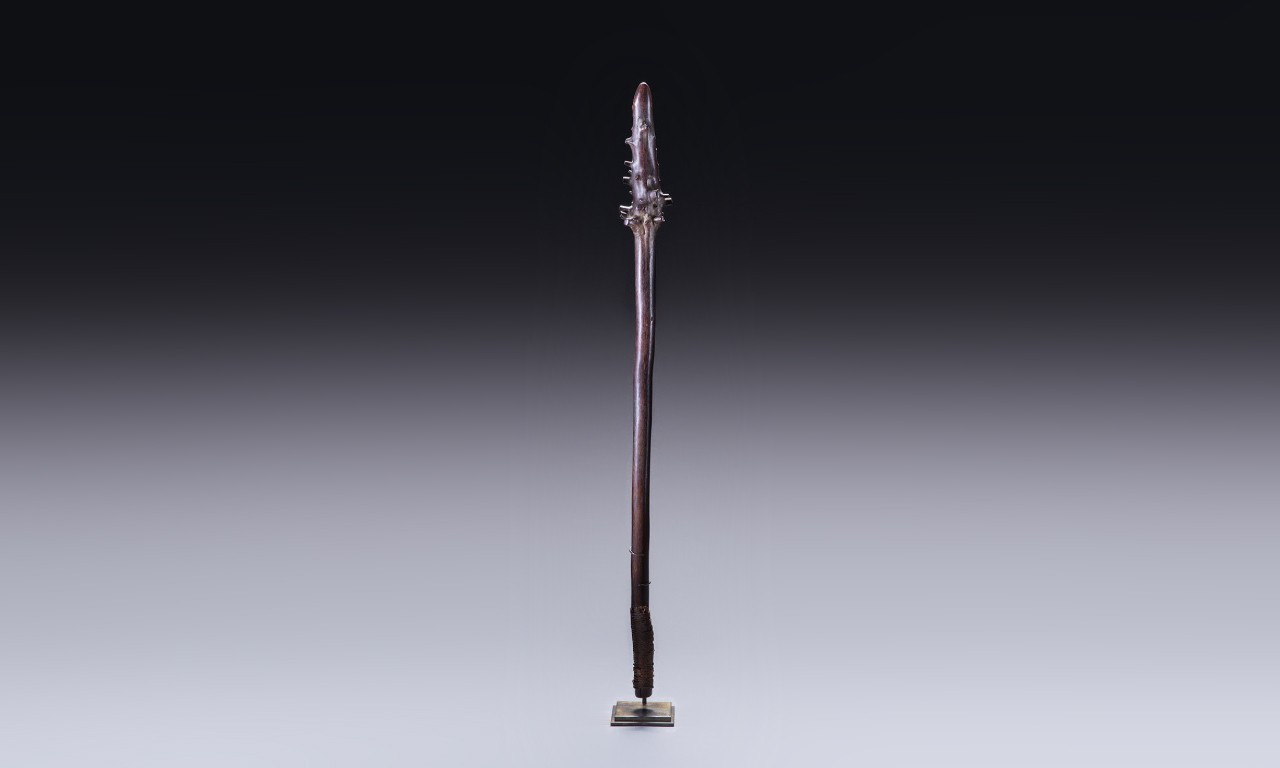 |
Rootstock Club (Vunikau), mid 19th Century
Fiji, Melanesia
Wood; 46 x 3 1/2 x 3 3/8 in.
2020.5.1
Bowers Museum Purchase |
Hit Square with a Root
The fundamentals of warfare are in large part the same across all cultures and all times: there is a point of contention and so the sides—whatever they might be—rally a force and attack an enemy with weapons. As an institution focused on material culture, the Bowers Museum looks mostly at the weapons themselves, and even just of those we have featured on the Bowers Blog we can see that a great variety were used in combat. Posts like The Niue Club in Town and Fijian Kiakavo Dance Clubs have already looked at wooden clubs including those hailing from Fiji. This post looks at three Fijian rootstock clubs whose heads are shorn from the underground arteries of young trees, and the longest of which is a new acquisition.
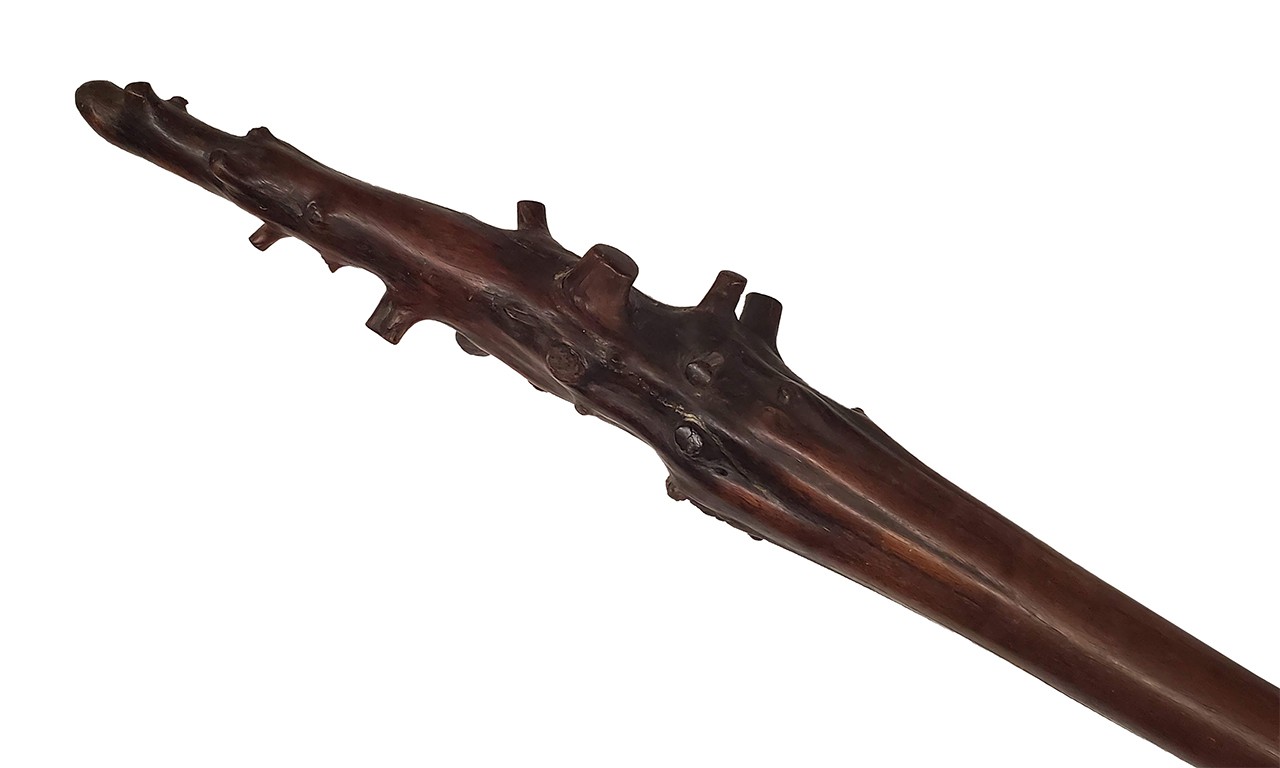 |
Detail of 2020.5.1
Bowers Museum Purchase |
A History of Violence
To understand how these clubs would have been used, it is important to share a larger history of Fijian warfare. One of the foremost experts of Fijian warfare explains the state of military affairs in Fiji up to the end of the 19th century anecdotally: in most societies, tales of war pervade popular culture because they are rare breaks from long stretches of peace. However, in Fiji the opposite was true. Narratives of peace were told amidst an almost ceaseless series of family feuds and regional skirmishes. Account after account show how Iliadic wars rose from infidelities. Battles did feature certain theatrical elements and some clubs were just used as representations of symbolic power, but men always kept a club on their person for personal safety rather than aesthetics. This led to both villages fortified with palisades and ditches to help protect them against attack and, as mentioned in previous posts, an estimated 100,000 clubs being made between 1770 and 1870, despite the adult male population of the islands hovering right around 20,000.
 |
Root Club (Vunikau), 18th to 19th Century
Fiji, Melanesia
Wood; 44 x 4 1/4 x 1 9/16 in.
2004.2.1
Jordan Community Trust Purchase |
Can Knot
Further reinforcing the importance of warfare in Fiji, approximately thirty different designs for clubs have been identified by experts, more than are produced by any other Polynesian island group. Depending on exactly how they are being counted, three to four of these are made with rootstalks. The Bowers Museum’s new acquisition is a vunikau which directly translates to “tree root.” Even more specific terminology is used when referring to clubs where the type of tree is known, but this is the general term for any club that uses the denser wood of the root as a head and retains relatively long, natural root nubbins. The reddish club is also a vunikau, though it is also reminiscent of the other root club varieties: the waka and bulikia which are defined by only retaining the primary or tap root. Held clubs were not the only ones that relied on root balls for their strength, however.
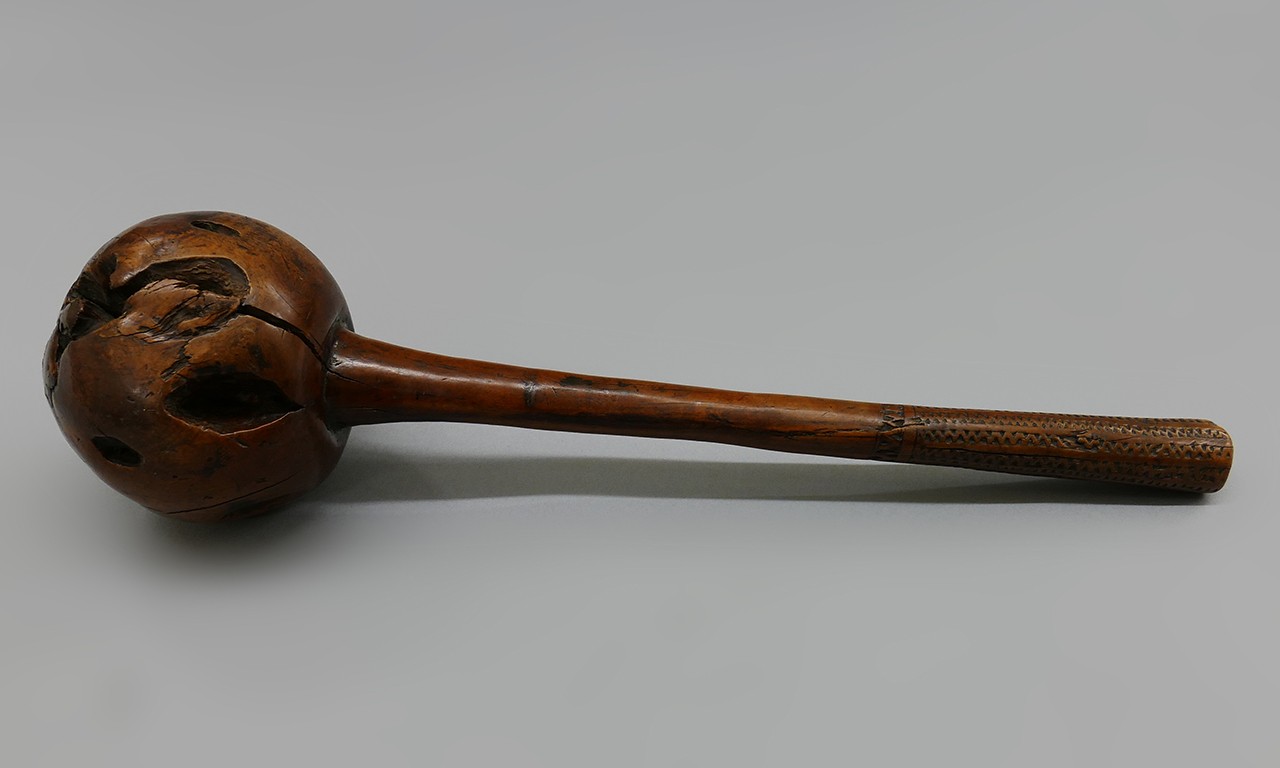 |
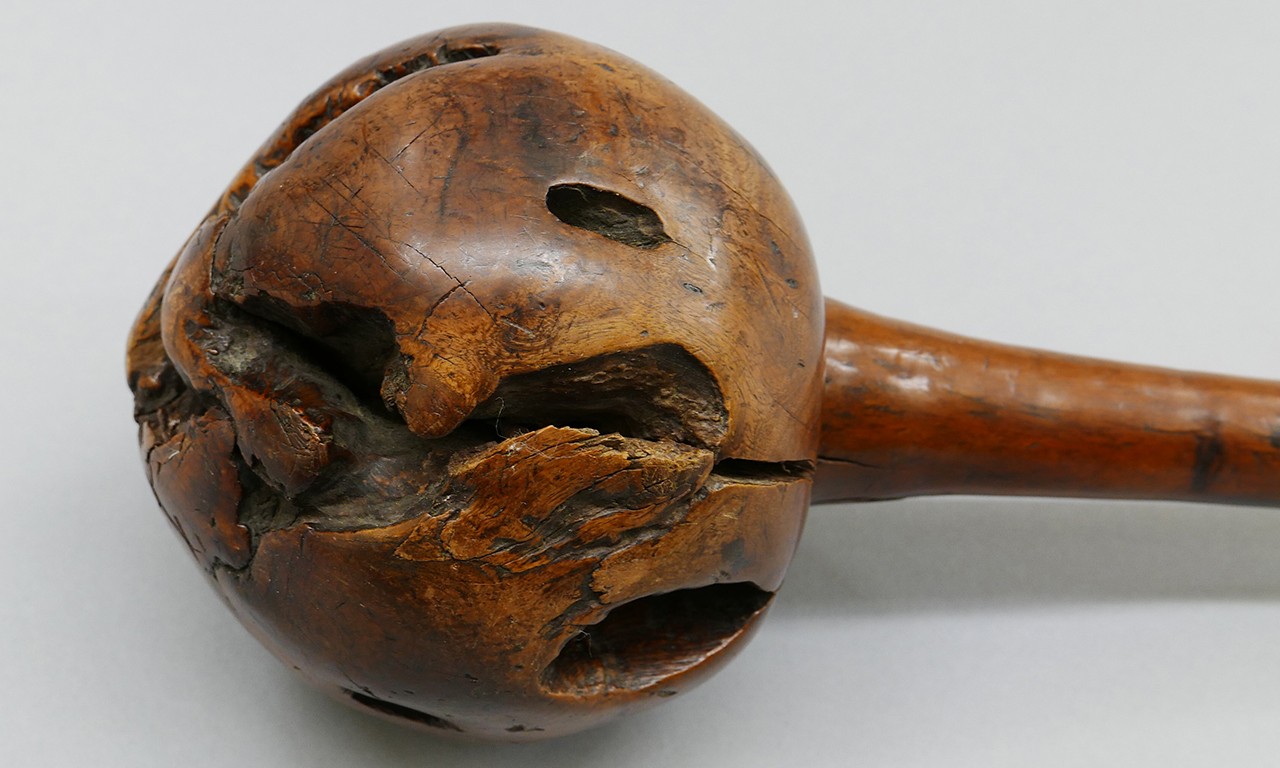 |
Throwing Club (Iula Drisia), early to mid 20th Century
Fiji, Melanesia
Wood; 16 3/4 × 4 1/8 × 3 7/8 in.
2018.13.11
Gift of Anne and Long Shung Shih |
You’ll Have to Toss Me
Iula drisia like the one featured above are a variant of the iula tavatava missile clubs with spherical heads, in many cases made from rootballs much in the same way as the vunikau. While some of the other shorter clubs that we have looked at on the Bowers Blog were used in ceremonies and dances, these were only used in battle. The far shorter clubs were sometimes used as melee weapons, but their intended use as a thrown weapon was far deadlier. Larger clubs like the vunikau were some of the most formidable weapons used by Fijians, who had a host of formidable weapons to choose from.
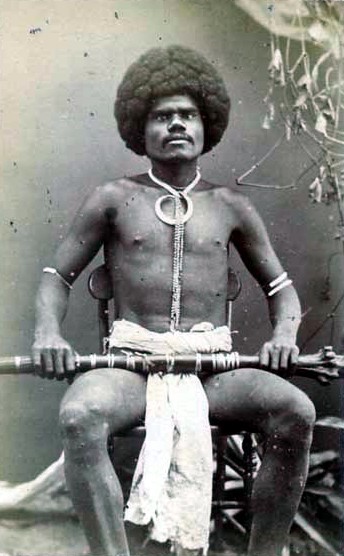 |
| Fijian mountain warrior, Kai Colo photographed by F.H. Dufty, Levuka, Fiji, 1870s |
Fight Club
The creation of root clubs is in no way original to Fiji, though it was not practiced uniformly across the Pacific. The use of roots as club heads is older than recorded history and sprouted independently in multiple locales where suitable plants were grown. Another rootstock club in the Bowers’ permanent collection hails from Africa. In Fiji, root clubs were generally carved from young ironwood trees which were pulled from the earth and had their individual roots trimmed down to create the many nubbins at the head of the club. Given the importance of weapons and other wood carvings, Fijian carvers were highly trained and specialized. Most of the finest examples of rootstock clubs are inlaid with small stars and other designs made of ivory. The same is true of iula drisia.
Text and images may be under copyright. Please contact Collection Department for permission to use. Information subject to change upon further research.







Comments